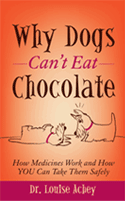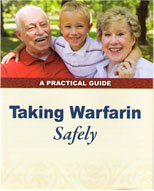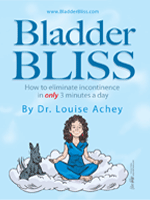Archive for January, 2016
January 18th, 2016. Filed Under:
Breast Cancer,
consumer information,
Medicine dangers,
medicines,
patient information,
side effects.
Tags:
estrogens,
Evista®,
hot flashes,
hot flushes,
phytoestrogens,
raloxifine,
soy,
tamoxifenQ: Are phytoestrogens safer than prescription estrogens for treating hot flashes?
Not necessarily. Phytoestrogens are plant-based substances that can act just like estrogen in our bodies. Although they aren’t exactly the same, they can do some of the same things estrogen can because they way they are shaped allows them to fit into the same places as both prescription estrogens we take, called exogenous estrogen, and the estrogens we make in our own body, called endogenous estrogen.
There are approximately 20 phytoestrogen compounds found in various foods and herbs, with soy products and flaxseed having the highest concentration. Herbal products such as black cohosh and red clover also contain phytoestrogens.
Phytoestrogens can behave just like other types of estrogen, but are about 100-10,000 times weaker than our own enodgenous estrogen. They can also have the opposite effect. Phytoestrogens can act just like the prescription medicines tamoxifen or raloxifine (Evista®) which block estrogen’s effect on breast tissue, which helps prevent breast cancer.
For example, in women with a low level of endogenous estrogen such as in menopause, soy phytoestrogens will act just like our own estrogens on bone and breast tissue. But in premenopausal women who have normal endogenous estrogen levels, soy phytoestrogen has the opposite effect. How does this happen? The phytoestrogen in soy can kick our bodies’ own estrogen off of its binding place on the breast cells, replacing potent estrogen that we made with the much, much weaker phytoestrogen.
Soybeans and soy products such as soy nuts, soy milk, tofu and tempeh are particularly high in a particular type of phytoestrogen called isoflavone. Because they are the most concentrated and available source of phytoestrogen, soy foods and soy concentrates have been studied the most.
Phytoestrogens are interesting to researchers because they can relieve hot flashes during menopause in some women. Researchers have noted that Asian women don’t suffer from hot flashes during menopause as commonly as Western women do. One major difference is believed to be their diet; a typical Asian diet contains a lot more soy than a typical American diet.
One particular isoflavone called genistein is the main phytoestrogen in soy-based foods. In research studies, an increased intake of genistein has been associated with a 10% reduction in hot flash symptoms.
How much soy does it take to experience a reduction in your hot flash symptoms? Most clinical studies have used 40-80 mg daily of phytoestrogens, particularly genistein. You can get 40 mg of genistein from ½ cup tofu, ½ cup soy nuts, or 1 cup of soy milk. Flaxseed, chickpeas, beans, peas, green leafy vegetables, cauliflower and nuts are other food sources of phytoestrogens.
Are phytoestrogens actually safer than estrogen in treating hot flash symptoms in menopause? Not always. In susceptible individuals soy extracts may actually trigger breast cancer. Soy has been shown to stimulate increased cell production in normal breast tissue, and the phytoestrogens found in soy and red clover may interfere with the effectiveness of tamoxifen, a medicine used to prevent breast cancer.
If you have a family history of breast or endometrial cancer, or have had breast cancer, you should avoid consuming large amounts of soy based foods and soy supplements. If you are vegetarian or vegan, don’t eat tofu or tempeh every day, and restrict your consumption of soy milk.
If you are not vegetarian, it’s unlikely that you’ll get enough soy in your diet to increase your risk of breast cancer. That’s not the case if you take supplements containing soy concentrate or herbal products marketed for “menopause support” such as Remifemin®. If you have a family history or an increased risk of breast cancer you should avoid taking supplements containing soy concentrates, black cohosh or other phytoestrogens as well as restricting your intake of soy-based food products.
Leave a Comment
10 years ago, I struggled with the “winter blues”, a type of depression called seasonal affective disorder (SAD). It would start in mid-November with a day or two of feeling down, and by Christmas Eve I was having “black cloud” days, one after another. I could “feel” a black cloud hovering over my head as I got up in the morning. All day long, wherever I went and whatever I did, that black cloud sucked up all my good feelings, leaving me feeling helpless and hopeless. I stopped eating, felt tired and sad all the time, and could barely get through the holiday activities or my days at work. At home, I cried a lot. Every year it got worse and worse, until finally I went to my doctor, who started me on an antidepressant.
Within a week after beginning the medicine, I started feeling more like myself, and over the next few weeks the black cloud slowly evaporated and my appetite and energy level recovered.
The medicine helped me feel almost normal except for one thing: my mouth always seemed dry. If I tried to talk, after a couple of sentences my throat would get tickly and scratchy. I’d cough and have to stop talking until I “wet my whistle”. Some days I drank so much water I wondered if I was going to grow a hump.
To help me keep talking during presentations without having to stop every few minutes to cough and sip, I started chewing gum, looking more like Elsie the Cow or Pete Carroll on the Seahawk sidelines than a clinical instructor delivering a lecture.
If you’d given me a choice between going back to my “black cloud” days and having a dry mouth, I wouldn’t have dared stop the medicine that was keeping me going. But when my eyes started burning, I spoke up and asked my doctor to taper me off the antidepressant. Within a month the black cloud came back and my appetite took a nosedive, so we restarted the medication. Things went okay for the next few months but the burning of my eyes finally drove me to see my eye doctor.
After finishing her examination, my eye doctor sat down next to me and confirmed what I had suspected: my eyes were too dry. Not only that, but my corneas were not getting enough moisture and were beginning to show damage.
“You don’t have a normal level of tears,” she explained. “If something isn’t done soon, your vision will be permanently damaged.” I was able to get wax plugs in my tear ducts, to keep my tear fluid from draining out so quickly. My eyes immediately felt better. Then, after not having a cavity in years, my routine dental checkup revealed accelerated gum disease and 2 new cavities. I felt like my body was falling apart. Today, the connection is clear: side effects from medications like dry mouth are not just an minor annoyance. Your gums, teeth and eyes can also be at risk.
Tapering off my antidepressant again, this time I did some research and installed full spectrum lights: long fluorescent bulbs in my office at work and incandescent ones at home to help my body “get more sunshine”, especially during the dark winter months. That little jade plant in my office that had never seemed to do anything? After installing my new lights it turned a beautiful deep green, doubled in size and outgrew its pot in less than 2 months!
One of the most devastating side effects of taking medicines is dry mouth. Saliva is not just “drool”. It has vital antibacterial properties. A healthy adult makes about a liter and a half of saliva every day, rich in minerals that help your teeth resist decay and keep your gums healthy.
According to the Academy of General Dentistry, the most common cause of dry mouth is prescription and non-prescription medications, and 30% of Americans over the age of 65 have dry mouth. With over 500 prescription and non-prescription medications containing ingredients that can cause dry mouth, if you suffer from it, speak up and tell your doctor or pharmacist.
There’s more about dry mouth at the Academy of General Dentistry’s consumer website www.KnowYourTeeth.com, in their reference section under D (for dry mouth).
Leave a Comment



